Themed collection In Memoriam of Prof. Richard T. Williams (May 27, 1946 - July 5, 2021)

Introduction to the themed collections in memoriam of Prof. Richard T. Williams (May 27, 1946–July 5, 2021)
Professor Jurchescu, Dr. Wolszczak, Professor Burger, Dr. Bourret-Courchesne, and Professor Dorenbos introduce the Journal of Materials Chemistry C–Materials Advances themed collection in memoriam of Prof. Richard T. Williams.

J. Mater. Chem. C, 2022,10, 14025-14026
https://doi.org/10.1039/D2TC90173K
Revisiting the origin of green emission in Cs4PbBr6
An overview of recent debate about the origin of green emission in Cs4PbBr6 and/or CsPbBr3 is presented; several possibilities are discussed, including a defect-mediated event in Cs4PbBr6 or CsPbBr3 nano-inclusions embedded within Cs4PbBr6.

Mater. Adv., 2022,3, 6791-6798
https://doi.org/10.1039/D2MA00544A
Novel semiconductor materials for advanced supercapacitors
This manuscript systematically reviews the research progress of novel semiconductor materials in the preparation and application of SCs.

J. Mater. Chem. C, 2023,11, 4288-4317
https://doi.org/10.1039/D2TC04816G
Perspective on the scintillating response of CdSe based nanoplatelets heterostructures
We explore the effect of shell thickness on the time and spectral response of CdSe/CdS core–crown and CdSe/CdZnS core–shell nanoplatelets (NPLs) under X-ray and intense optical excitation.

Mater. Adv., 2022,3, 8341-8350
https://doi.org/10.1039/D2MA00635A
Cesium lead bromide semiconductor radiation detectors: crystal growth, detector performance and polarization
Large volume cesium lead bromide (CsPbBr3) perovskite semiconductor radiation detectors match the detection properties of CZT and TlBr but potentially at a lower cost and better stability.

J. Mater. Chem. C, 2022,10, 12708-12714
https://doi.org/10.1039/D2TC01679F
Compositional engineering of multicomponent garnet scintillators: towards an ultra-accelerated scintillation response
A Czochralski-grown single crystal of GAGG:Ce,Mg allows for a high Ce dopant and Mg codopant concentration in the crystal, resulting in acceleration of scintillation decay down to several nanoseconds at the expense of light yield.

Mater. Adv., 2022,3, 6842-6852
https://doi.org/10.1039/D2MA00626J
Temperature dependent scintillation properties and mechanisms of (PEA)2PbBr4 single crystals
Low temperature optical and scintillation characterisation of PEA2PbBr4 single crystals, based on which two potential scintillation mechanisms are proposed.
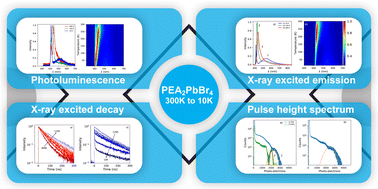
J. Mater. Chem. C, 2022,10, 11598-11606
https://doi.org/10.1039/D2TC01483A
Modulating the photoelectrocatalytic conversion of CO2 to methanol and/or H2O to hydrogen at a phosphorene modified Ti/TiO2 electrode
The effect of phosphorene as co-catalyst in Ti/TiO2 nanotubes electrodes on CO2 reduction to methanol, and water splitting was investigated.

J. Mater. Chem. C, 2022,10, 11276-11285
https://doi.org/10.1039/D2TC01814D
Photodetection and scintillation characterizations of novel lead-bismuth double perovskite halides
Double perovskite materials with large effective atomic numbers and high mass densities generate short absorption length for radiation detection. Bromide and iodide variants were characterized for their scintillation and photodetection properties.
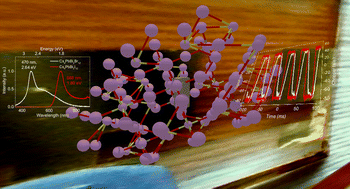
J. Mater. Chem. C, 2022,10, 11266-11275
https://doi.org/10.1039/D2TC01646J
Modeling ionization quenching in organic scintillators
Ionization quenching models were assessed by evaluating light yield data from multiple organic scintillators and recoil ions over a fission spectrum neutron energy range, important for basic science and applications.

Mater. Adv., 2022,3, 5871-5881
https://doi.org/10.1039/D2MA00388K
Transient optical absorption as a powerful tool for engineering of lead tungstate scintillators towards faster response
Transient optical techniques are exploited to study the origin of accelerated luminescence decay in heavily doped lead tungstate scintillators.
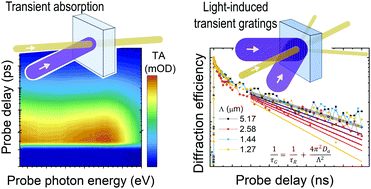
J. Mater. Chem. C, 2022,10, 9521-9529
https://doi.org/10.1039/D2TC01450E
Scintillating thin film design for ultimate high resolution X-ray imaging
Energy deposition in scintillating screens effects on the high resolution X-ray imaging.
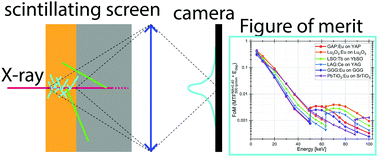
J. Mater. Chem. C, 2022,10, 9257-9265
https://doi.org/10.1039/D2TC01274J
BA2XBr4 (X = Pb, Cu, Sn): from lead to lead-free halide perovskite scintillators
Understanding the scintillation properties of Cu- and Sn-based two-dimensional perovskite crystals while comparing them to those of high-light-yield and fast Pb-based crystals.
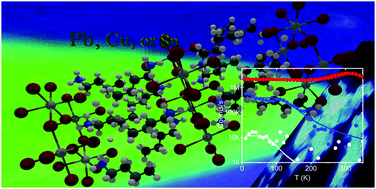
Mater. Adv., 2022,3, 5087-5095
https://doi.org/10.1039/D2MA00258B
About this collection
Guest edited by Oana Jurchescu (Wake Forest University), Weronika Wolszczak (Wake Forest University), Arnold Burger (Fisk University), Edith Bourret-Courchesne (LBNL), and Peter Dorenbos (TU Delft)
This special collection across Journal of Materials Chemistry C and Materials Advances is in memoriam of Prof. Richard T. Williams, who sadly passed away on July 5, 2021.
Prof. Richard Williams served as the Reynolds Professor of Physics at Wake Forest University until his passing in 2021. At Wake, Richard became internationally renowned for his pioneering contributions to the science of scintillators and ultrafast laser spectroscopy. His work has impacted many technological applications from energy and environment, to national security and healthcare. Prof. Williams also helped establish the PhD program at Wake Forest University where in the 1980s he mentored the first physics PhD graduate.
This special collection, which covers the topics he was most interested in, will honour Prof. Williams the scientist, the mentor and the colleague:
- Ultrafast spectroscopy
- Scintillators
- Optoelectronic devices
- Luminescent materials
- Quantum calculations
- Crystal growth
- Radiation detectors